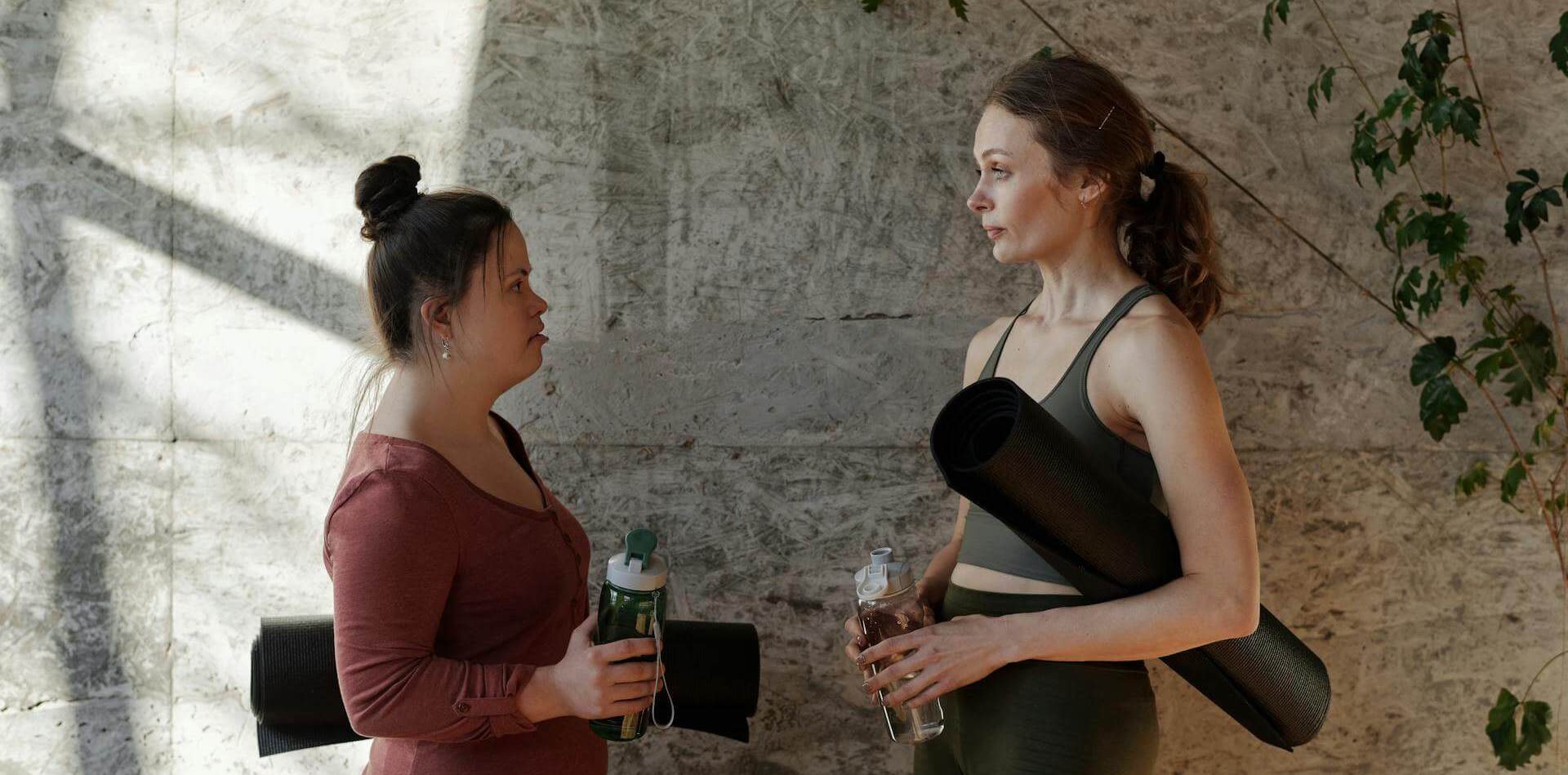
Yoga Teaching and Boundaries: When is Close, Close Enough?
How does a yoga teacher grow their community? What image does one project? Is it a welcoming attitude, Knowledgeability, a sense of calm, all of the above and beyond? Did it work? Did it work too well? If it did, then you have probably created said community or following. As such, you may have found yourself open to all manner of circumstances. As a teacher, this leads you to take more roles than you thought possible. Am I getting warmer now?
Suddenly you become the instructor, trainer, guidance counselor, nutritionist, psychologist, life coach, and confessional. Students are thrust upon your hands, each one with particular physical and mental vulnerabilities. After all, there’s no such thing as a perfect yogi (present company included). What do you do when they seek help? Having questions about the practice is an easier fix but what of the other issues? What do we do when a student is seeking a confidante?
Essentially, we are a service-oriented industry, Wearing many hats comes with the territory. Any instructor whether yoga or not will acquire personal details about their client. It will happen as you get to know your clients, there’s not much you can do about it except to draw that proverbial line. At what point do we draw it? Will we stay firm or will we let it blur?
Creating boundaries is a very tricky art of being an instructor. So I would like to start with the legal boundaries and policies a studio or gym might have when managing clients. With it, I will share how I created my shields through experience and what made them come down. Lastly, I will also discuss how we firmly and politely tell our students where our limits are.
Why are boundaries important?
The simple answer is to prevent professional and emotional burnout. Yoga teachers are empathic by nature. your reserves can be depleted. As yoga teachers, emotional depletion happens much faster than you expect. Why? You use your emotional intelligence in a professional capacity. That can be very draining. Plus, if you need to establish limits with your family, children, and partners, you must do them with our clients. Otherwise, your professional life will pile up and become a psychological avalanche that will bury you alive. Take the time to work on your terms/conditions coupled with working on yourself to implement them.
There are 2 kinds of boundaries:
Professional/company policy and the ones you put up.
The first one is in black and white. Your employee contract, studio guidelines, etc. are your professional limits. A good contract or instructor manual may also have a guideline for teacher-student interaction. If your place has that, then follow it, as a studio owner you put that into place and practice. The latter is your choice as an individual. It can be as simple as preferring to use your mat when you teach, the topics you will stick to when talking to your students – everyone's boundaries are different. Some have more patience than others, some of you let people peek into their lives now and then, Other teachers may even have coffee with their clients sometimes but not introduce them to their inner circle. Your boundaries can also be influenced by your culture. Asians are more reserved but Here in Spain, people can be more friendly and open. I’ve learned to adjust my boundaries to become a bit warmer without sacrificing my private life. Reflect on the kind of image you want to project as well as the part of yourself that you need to protect.
Scope of Practice
A yoga teacher is a knowledgeable and certified person to teach the practice of yoga and its philosophy. Yoga Alliance has a scope of practice PDF .This may serve as a guide. In addition, while we may have a working knowledge of anatomy and physiology, it is normally in a healthy person to which we apply our skills. We know how the body moves. We know how to progress our students safely into their practice. Most importantly, we ask for consent when we manually adjust our students. We do not perform actions that of a physiotherapist on our students nor give medical advice, diagnosis, or speculation of a medical issue. Unless we have a certification, degree, license to practice in other fields, we refer our students to the proper professional for what ails them. If it is something simple such as a sprained ankle, we can offer ice or materials for them to tend to their body. We can ask them about their pain level and offer assistance but we refer them to a healthcare professional as soon as it is beyond our help. Most of you may have taken a basic first-aid or CPR course so if your certification is up-to-date, use it to your discretion.
Remind your students
Once in a while during class, you may remind your students that you are a guide to their yoga practice. Moreover, they have the last say when it comes to their bodies. It’s a soft way to imprint that you are a teacher and nothing more. However, if you still have a student or two that will ask for advice beyond your capabilities, then you can choose to listen, remind them of your SOP, and refer them to another professional or simply apologize and say that you cannot help them with their situation. However you handle things, you have the freedom to keep true to your beliefs or go beyond. For example, In my first year as a yoga teacher, a student called and asked me to act as a translator for her because she was stung by a bee and needed a spanish speaker when she goes to the ER. She knew it wasn’t in my job description, and was sorry for bothering me on a weekend but I chose to help her. But that’s just me.

What happens when lines are crossed?
It depends on which line we’re talking about. Go back to your scope of practice or employee contract and proceed from there. If a client wants to develop a friendship with you, platonic or other, then you need to weigh your risks. I cannot give you a straightforward answer like “Stick to your guns.” or “Carpe diem!” Life doesn’t work like that. You need to decide if you want a student to become a friend with all that it entails. In my case, I became friends with a handful of students throughout the years. I also had to have words with a few because I wanted our relationship to remain within the teacher-student dynamic. If the line crossed was of a romantic nature, then it is playing with fire. It can warm you perfectly or burn down everything you’ve built. I won’t say “No, don’t do it!” because I am the first one who didn’t take my advice ( I will tell you the story in a bit). Be careful in your consideration or rejection because both your reputations are in danger of exposure. There have been many cases where love bloomed in class but the opposite could have happened just as easily. In my case, I was an English Teacher, during my first 2 months living in Spain and he was my student. Within a week we started dating and I’ve been happily married to him for 10 years. On that note, I wish you all the best but be as diplomatic as you can and don’t be rash in your decision-making.
In a nutshell, I would say that you need to find a balance between your professional and personal needs and base your limits on your values as a person, your emotional intelligence and capacity, and your employee or studio policy. That said, recognize that the lines you draw can and will be tested, blurred or vanished because life is a paradox. We create shields to protect ourselves from human actions. At the same time, it takes human actions to bring our barriers down. So whatever happens in your career, be kind to yourself. I hope this article has served you well.
Good Luck Momoyogis!


